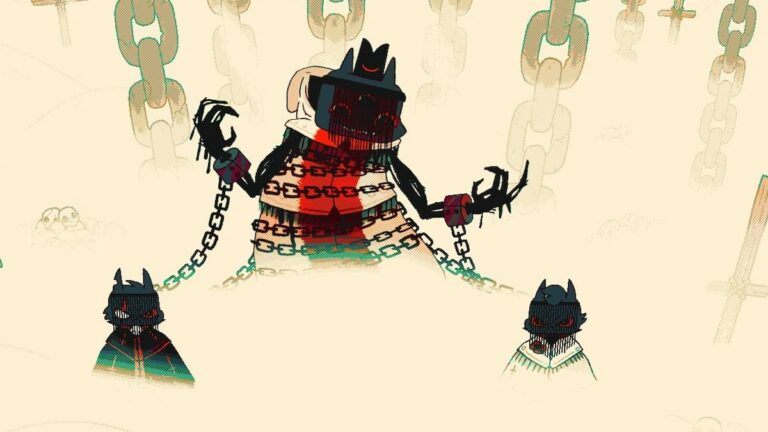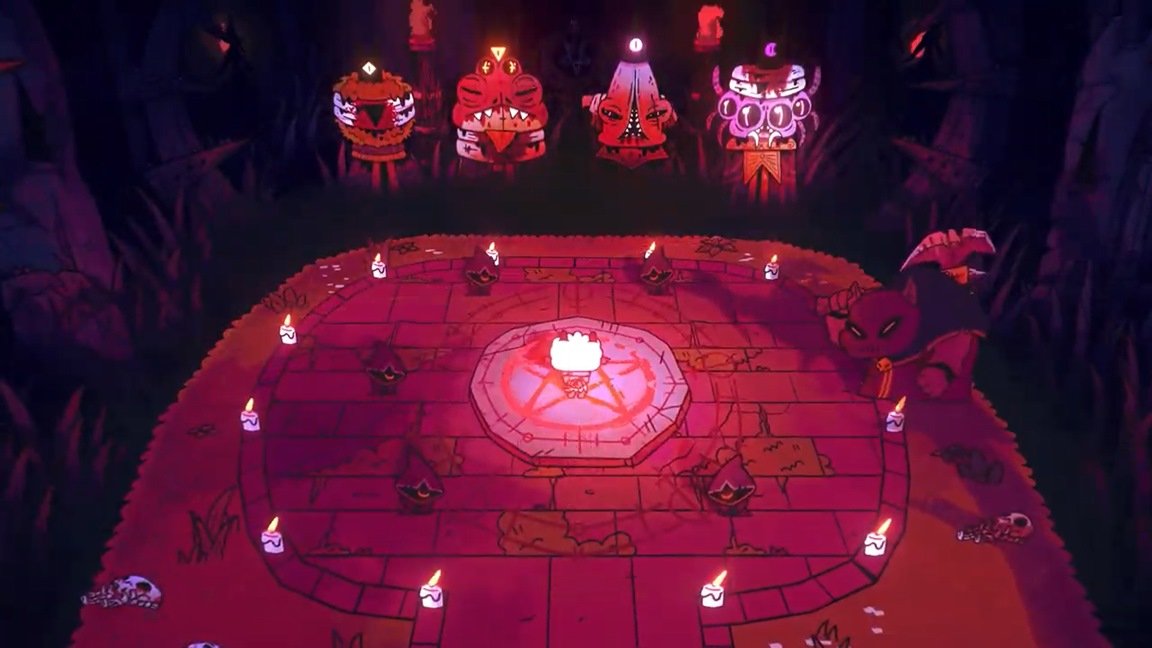The One Who Waits - Cult of the Lamb
A new video game, Cult of the Lamb, was released just a few months ago by Massive Monster Games. Cult of the Lamb is a rogue-like game, with dungeon crawling aspects, but mixed with a management simulator for taking care of your ever-growing cult. Loads on the part of my religious studies side could be said about loads of this game. But we’re going to focus today on the main reason for the game’s story - the One Who Waits.
The player plays as a lamb who was being used as a sacrifice to keep the revival of the One Who Waits at bay. At their death, the lamb is brought before a large figure in chains. This figure gives the lamb the gift of life again, but in return the lamb must create a cult in the figure’s name, and defeat the four bishops of the Old Faith that each keep the figure bound. Thus begins the game. As the player explores more of the lands of the Old Faith and defeats the four bishops, they learn more about the figure at the heart of it all - the One Who Waits.
I love the figure of the One Who Waits. It’s such a wonderful and typical mythical tale, and yet one which is still artfully told. The One Who Waits is also such a wonderful name, connoting something strange and mystical at its heart. Today, I want to chip away a little at that mystery, and spend some time with the One Who Waits.
For most of the game, The One Who Waits is shrouded in a black veil, and remaining chained somewhere away from the typical lands of the game. Only occasionally is the lamb brought before them - mostly at pivotal points in the story of the game. The One Who Waits is deeply connected to the story of the bishops of the Old Faith, which is gradually revealed to the player the further they continue.
The four bishops have various parts of them bandaged and bloody, and references are made at several points to the fact that these wounds were caused by the One Who Waits. The youngest, Leshy, has his eyes removed, Hecket’s throat is slashed, Kallamar’s ears are removed, and Shamura’s skull has been split. Each of the four refer to the One Who Waits as their brother, and each reveals something a little more about their brother and their situations as the player progresses in killing each one.
Each bishop is a figurehead of a particular domain of life. Leshy is of chaos, Hecket of feast and famine, Kallamar of sickness and health, and Shamura of knowledge and war. These figures are not the personification of these aspects, but the figureheads. They run the domain of chaos, or famine, or knowledge - they are not chaos and knowledge themselves.
This is important, because the death of Heket does not mean that your cult is magically unable to starve. The figureheads are not in direct control of these aspects of life and the world, and therefore are stand ins for the reality.
So if the siblings of the One Who Waits are all figureheads of a particular arena - what is the arena of the One Who Waits? As is made obvious from the very beginning, the One Who Waits is death. In the very beginning of the game, the lamb is sacrificed. They are actually killed. But this death brings the lamb directly to the realm of the One Who Waits - the realm of death.
Throughout the game, there is a complicated relationship with death. Despite the ability to die on a dungeon run, there is little consequence of this death. The lamb still comes back to the cult and lives to try again. From a personal perspective, death means very little to the lamb. At the same time, this is combined with the second part of the game’s structure - the cult management part. On your dungeon crawl, you encounter various forest creatures who are being sacrificed to the various bishops. You can save them, and in doing so bring them into your cult. There, you can put them to work for the cult, they worship you, and you take care of their needs. Over time, they grow old and die. Or they are sacrificed and die. Or they go on a mission to get things for the cult and die in the process. Death surrounds the cult, and sometimes your favourite cult member dies. You see other cult members making friends, finding lovers, and grieving at the graves of their fallen friends. Despite death not touching the lamb specifically, it still has a detailed and complicated role in the game and for the player.
When you face the bishop Shamura, they tell you about their history with the One Who Waits. They inform you that it was them who gave the One Who Waits knowledge about change, which began to cause issues between the siblings. The One Who Waits started to have new ideas and push for change in the Old Faith, which the others did not feel. There is an interesting nature to the idea of change being connected with death - the immovable and constant nature of life. There is no change in death, only the constant presence of it’s inevitably. It is what waits for us all (you know, like the One Who Waits).
But change does happen in one of the possible endings to the game. The player lamb may choose to kneel and bow before the One Who Waits, or they may choose to not. Strength in the face of death, not because of the power of a magical crown but because of a strength of will, is what does change aspects of the world around us, and gives us a new sense of what death is and can be.



